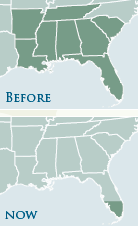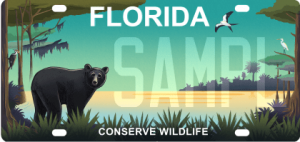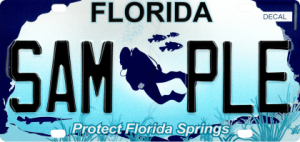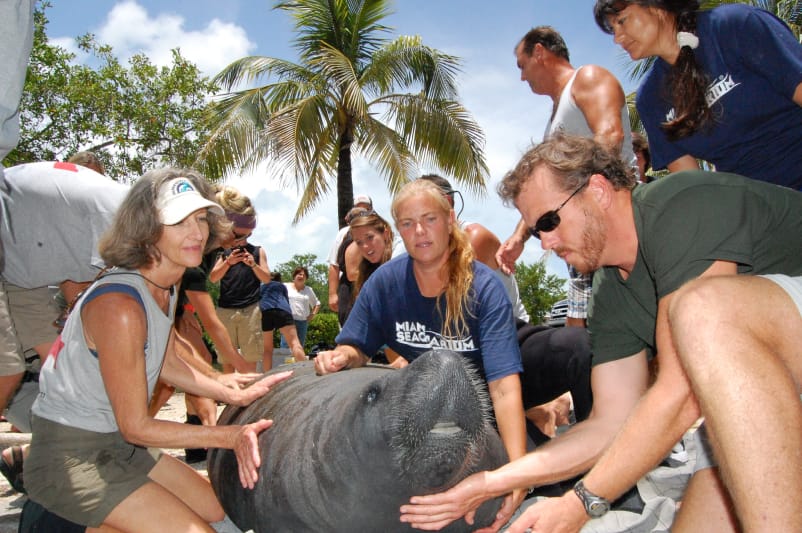While the panther has made a substantial recovery from near extinction, it remains an endangered species, and the fight for their conservation continues.
 The puma once had the largest range of any land mammal in the Americas. The species was well adapted to a variety of habitats from forests to deserts, mountains to rainforests. Today, pumas are found in only half of their historic range, primarily in the mountain and desert regions of the western United States. There now exists only one puma population east of the Mississippi River: the Florida panther. In the southeastern United States, panthers formerly ranged as far west as Arkansas and as far north as South Carolina. Now, most of the breeding population is restricted to south Florida below the Caloosahatchee River. There are about 120-230 adult panthers left in Florida.
The puma once had the largest range of any land mammal in the Americas. The species was well adapted to a variety of habitats from forests to deserts, mountains to rainforests. Today, pumas are found in only half of their historic range, primarily in the mountain and desert regions of the western United States. There now exists only one puma population east of the Mississippi River: the Florida panther. In the southeastern United States, panthers formerly ranged as far west as Arkansas and as far north as South Carolina. Now, most of the breeding population is restricted to south Florida below the Caloosahatchee River. There are about 120-230 adult panthers left in Florida.
Adult Florida panthers are a uniform tan color with lighter fur on their lower chests, belly, and inner legs. Shades of individual animals may vary considerably from grayish to reddish to yellowish. This uniform color conceals them effectively in a variety of settings, including the open range. Puma kittens are spotted, which helps them camouflage in the shadows of their den. These spots fade as they approach maturity at the end of their first year. Pumas have long, round tails that reach nearly two-thirds the length of their head and body. Their tails help balance their body, especially during ambush pounces on prey.
Male panthers are larger than female panthers. They weigh from 100 to 160 pounds; female panthers weigh from 70 to 100 pounds. Panthers vary in height at the shoulder from 24 to 28 inches and measure from 72 to 86 inches from nose to tip of the tail. Florida panthers’ skulls are distinct from other puma subspecies. Their skulls are relatively broad and flat with highly arched nasal bones, giving the profile a rounded appearance as it transitions from the forehead to the tip of the nose. Panthers often have a right-angle kink at the end of its tail, a “cowlick” in the middle of its back, and white flecks in the fur on its neck and back. The kinked tail and cowlick are thought to be the result of inbreeding within a small population and are not defining characteristics of the subspecies. These traits are found less frequently in the population following genetic management that began in 1995.
Panthers are solitary, elusive animals and are rarely observed in the wild. Much of what we learn about panthers comes from their tracks, scrapes, scratches, feces, and prey remains. Panthers are carnivorous, preying upon deer, wild hogs, raccoons, and various other small animals and requiring large areas to roam. Panther home ranges average 75 and 150 square miles for females and males, respectively. Panthers do not pair bond with their mate and are solitary in nature except for females and kittens. Births occur throughout the year, but mainly occur in late spring. Dens are usually created in a palmetto thicket; one to four kittens are born each litter.
During the 1800s and early 1900s habitat loss and hunting led to the panther’s near extinction. By the mid 1980s, only 20-30 panthers could be found in the wild and this small population was found to be highly inbred. A plan to restore the genetic health of Florida panthers was implemented in 1995. Genetic restoration involved the release of eight female pumas (Puma concolor stanleyana) from Texas in 1995 into available panther habitat in south Florida. The Texas subspecies was selected because they represented the closest puma population to Florida and the Florida panther subspecies historically bordered the Texas population, with interbreeding occurring naturally. This interbreeding ceased as habitat in the southeastern U.S. became fragmented in the late 1800s and throughout the 20th century. Five of the eight Texas females reproduced successfully, resulting in a minimum of 20 kittens. By 2003, the last three surviving Texas females were removed from the wild Florida population; no Texas pumas remain in Florida today. The introduction of these Texas pumas helped considerably in improving the genetic health of the panthers and increasing their population.
Recently, Florida panthers and bobcats have been suffering from a debilitating neuromuscular disorder. The disorder, named feline leukomyelopathy (FLM), was first recognized in 2018 and as of April 2020 there have been nine confirmed cases (seven bobcats, two Florida panthers) and 29 probable cases (15 panthers, 14 bobcats). Animals with the disorder have difficulty coordinating their hind limbs; extreme cases have led to the animal’s death. The Florida Fish and Wildlife Conservation Commission (FWC) is working to understand the causes of FLM, and the Foundation recently provided a $150,000 grant to support their efforts. We are committed to supporting the continued conservation of Florida panthers, one of our state’s most iconic and beloved animals.













